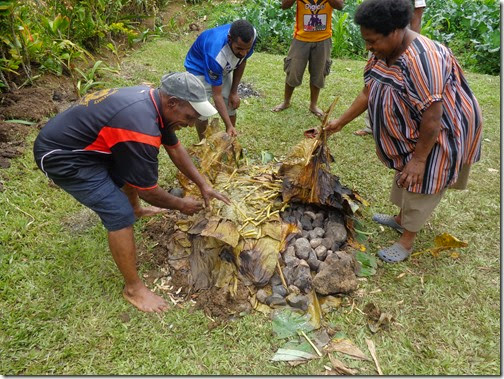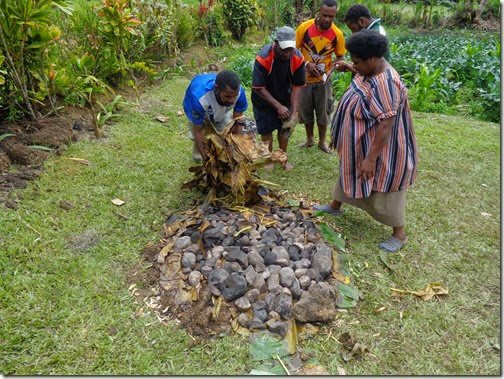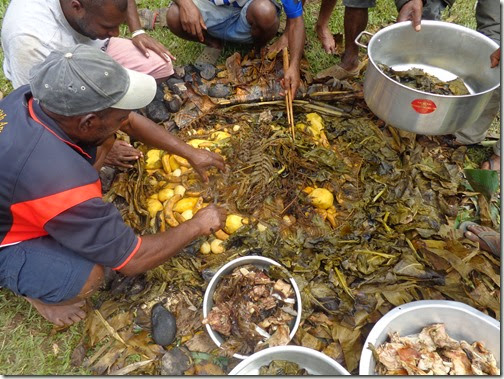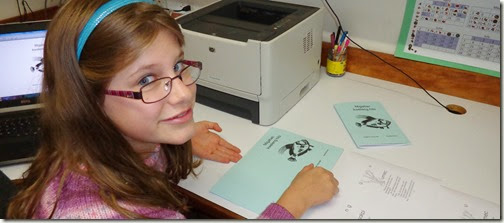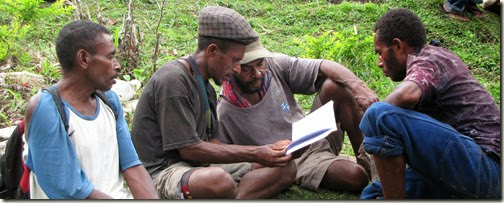Over the years we have celebrated some significant milestones with the Kukumbu family. One especially memorable occasion was when we both found out we were expecting babies after many years of prayer. I was pregnant with Claire and they were adopting their daughter Judy. It has been a joy to see the girls play and interact now ten years later. This last feast was a chance for us to celebrate our friendship, pray together and say goodbye.
The methods of preparing a mumu and the types of food cooked vary from one area of the country to another. As far as we know they all include cooking food in the ground. Because the Kukumbus come from a language group in a different province, they said the didn’t add water to create steam like the local Gadsup usually do.
There is a lot of prep work that goes into a traditional mumu. After all the vegetables and meat are prepared for cooking, rocks are heated in a fire and a hollow is made in the ground. Then all the food, leaves (to seal in the heat) and rocks are layered in the hollow. You can see the layers in the photos below as our hosts unveiled the feast.
On top was a layer of broccoli leaves that had dried out from the heat. In the background you can just see the edge of their plentiful broccoli garden.
Next was the layer of heated rocks. They were still too hot to touch even for work-hardened Papua New Guinean hands!
Next was layer banana and broccoli leaves.
Now we’re starting to see the first layer of food—chicken, sausages and greens.
The meat was cooked on a layer of special ferns that the Kukumbus use for flavoring. And underneath the ferns was the final layer of kaukau (similar to sweet potato), potatoes and cooking bananas.
A feast such as this is best eaten with your hands while passing the salt. Unfortunately for you that means our fingers were too busy to hold a camera. You’ll just have to trust us that it was delicious and we all thoroughly enjoyed it. <smile>

